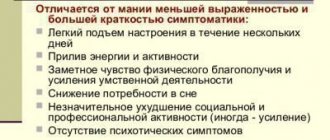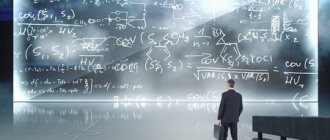Eidetism is the ability to accurately and maximally detailed reproduction of images (visual, sound, tactile) of individual objects or scenes after the cessation of their direct perception. These images are characterized by a difference from ordinary familiar themes, and the psyche continues to perceive the object in its actual absence. Another definition of eidetism characterizes it as the ability to independently evoke and hold in attention images that, in terms of the impact of their sensory characteristics, are identical or superior to reality. The phenomenon and the principles of its functioning have not been fully studied and are manifested only in a small percentage of the adult population, while in childhood eidetism is considered a more popular phenomenon. Subsequently, the functions of eidetic memory are lost or significantly weakened in the process of developing verbal skills.
Eidetism is a scientific definition in psychology, which in non-core literature and everyday use is called photographic memory. Photographic memory does not exist as one of the mnestic types. As a result of experiments aimed at establishing the fact of its existence as such, it was revealed that none of the group of subjects could fully fulfill the conditions of the experiment (reproduce from memory a text turned backwards, whereas when looking at a photograph this task is not particularly difficult ).
The presence of tendencies towards eidetism is due to physiological factors (genetics, brain development, neuroplasticity), but as a constitutional trait it persists in a relatively small number of adults. It was also noted that the preservation of eidetic abilities is associated with the nature of human activity, and is more common in creative professions.
The development of eidetism has several areas of training, during which, of course, mnestic abilities improve, but the eidetic type of memory does not always develop.
The concept of eidetic memory and its development in psychology
Eidetic memory in psychology or eidetism is a special type of thinking in which a person is able to instantly remember various images and then reproduce them.
Eidetic memory in psychology - what is it.
The phenomenon is characterized by visual impression, as well as other sensory modalities:
- taste;
- tactile;
- olfactory;
- auditory.
Eidetic images held in memory differ from objects of perception in that the individual is able to perceive an object, object, or phenomenon as present at the moment, which allows one to experience various phenomena in their absence.
The term is derived from the Latin word εἶδος, which translates as “image” or “appearance.” An individual with such a memory only needs to look at the required picture once, after which he will be able to accurately describe the image he saw. The phenomenon is otherwise called photographic memory.
History of origin
According to researchers, eidetism was first described by the Serbian scientist in the field of psychoanalysis V. Urbancic in 1907. The theory of figurative thinking was developed at the German school of psychiatry and psychology named after E. Jensch, who, together with students, conducted a number of fundamental studies of the eidetic phenomenon.
Years later, in 1933, Hitler’s supporters created the so-called “integration typology” - a concept of an ideological type that linked eidetics and national ideas.
This served to develop various socialist slogans, and subsequently to the creation of techniques for improving photographic memorization.
In the USSR, the most significant contribution was made by the Soviet psychologist L.S. Vygotsky, after which scientists dealt with the issues of eidetic memory:
- P.P. Blonsky;
- S.V. Kravkov;
- A. R. Luria;
- S.L. Rubinstein;
- B.M. Teplov;
- F.N. Shemyakin.
The eidetic theory was first mentioned in the scientific journal “Pedology” by P.P. Blonsky, as well as in the book “Essays on Psychology” by S.V. Kravkov, which were published in 1925-1930.
In the works described, first of all, the emphasis is on a meaningful practical definition of eidetics as an important and previously unstudied type of memorization.
The book “Psychological Essays” contained a definition of eidetism, including a listing of the main problems of the theory, excerpts from various research protocols, and the original sources of experiments were also evaluated and indicated.
Eidetics in the USSR developed not so much as a developing technology for the population, but was assessed from the point of view of an ideologically determined theory.
Before the development of a special type of memorization within the framework of Nazi science, eidetic techniques were perceived by Soviet scientists in the same way as others - factuality was welcomed, and logical constructions on theory without concrete practice were criticized due to non-acceptance by Marxism.
Eidetic abilities training and eidotehnika
I. Schultz described repeated cases of schizophrenia with suicide attempts, which arose as a result of inept but persistent attempts to evoke eidetic images. M. Zoshchenko described a number of similar cases among writers in his book “Before Sunrise.”
As a treatment, I. Schultz proposed to again evoke eidetic images, only to do it competently. This approach is outlined, in particular, in the pre-war work of one of Schultz's collaborators, K. Thomas. The approach was successful.
Thus, chess player and psychologist A. de Groot, who became interested in eidetism as a phenomenon, argued that many people can develop abilities. As an example, he cited chess grandmasters who are able to remember many combinations and scenarios for the development of events during a game.
Main characteristics
Both historically and substantively, a detailed description of the eidetic theory was based on the consideration of any relationships, hereditary component, as well as the unity of the 3 main aspects or levels of given areas.
Scroll:
- Eidetics. Acts as a general psychological theory, which is at the level of philosophical, theoretical, and methodological errors of psychology as a science.
- Eidetism . It is perceived as an experimental or empirical phenomenon, indicating a special type of memorization, which subsequently led to the development of eidetics as a private scientific theory.
- Integration typology . It is a fascist idealistic, essentially a pseudoscientific concept that includes features of meaningful, functional, or organizational-transforming processes in the role of the superman personality.
In the concept of modern psychology, it is customary to highlight the characteristics of eidetic memory, based on which one can make a value judgment about one type or another.
Scroll:
- Visualization and Sensory . Reproduction of primary visual images, while secondary ones follow visualization. Thus, an eidetic person will first of all remember a figurative picture, after which - other images. For example, at first we talk about the beach, then thoughts develop about a cocktail in hand, other people, olfactory sensations, and so on.
- Detailing. The most detailed drawing of all images, in which such little things are remembered as the number of buttons on a shirt, whether the laces are tied or not, and so on.
- Involuntary retention of objects . In this case, the individual does not set the task of remembering anything; objects or phenomena are stored in memory automatically, unconsciously. The involuntary variety is characteristic only of born eidetics.
- Great variability . A well-developed eidetic memory, especially at birth, indicates the ability to simultaneously memorize more than 10 foreign languages, quote all of Shakespeare, or know by heart the passengers of 3 different airliners, only once having seen information about their names.
Eidetic memory in psychology can be both acquired and innate. If the first type relates to the practical development of technology, then the second indicates various brain anomalies. At its core, eidetics is the science of improving photographic memory.
What is eidetism or photographic memory? A little theory
People who have developed eidetic memory remember in detail such things as where a person sat, what he did, what he looked like, and what exact words he said. They can remember every word or character in books up to 500 pages long, or the dates of facts that happened months or even years ago, with minimal effort.
If you show a person who has eidetic memory (or photographic memory) just for a moment an image that he has not seen before, he will be able to mentally recall this image to the smallest detail, such as how many windows there were in the building, how many people there were street, etc.
Do you know your abilities well? How developed are your memory, attention, concentration and other cognitive skills?
CogniFit online general cognitive test: with the help of a scientifically developed program, quickly and accurately assess your brain health, learn its cognitive strengths and weaknesses. The results of this neuropsychological test help determine whether a person's cognitive changes are normal or whether a neurological disorder is suspected. Get your result in less than 30-40 minutes. CogniFit is the most recommended and used cognitive testing program by professionals. The test is recommended for adults and children over 7 years of age.
In addition, a characteristic feature of people with eidetic memory is that their eyes move as if they are scanning the images or books they see at that moment.
There are cases in which this type of memory manifests itself spontaneously, and a person remembers specific questions with amazing accuracy, but at the same time he is not able to retain information received from another source.
There is currently no scientific explanation for this phenomenon. Moreover, there is a great debate in the scientific community, which was especially popular in the last decades of the last century, regarding whether eidetism actually exists.
The most recent existing study on the topic of eidetism was conducted by researchers from the University of Malaga. Scientists claim that the phenomenon of photographic memory, or eidetism, may be associated with an increase in the production of a special protein called “RGS-14”. This protein affects the area of the brain responsible for processing visual information, significantly increasing long-term memory abilities.
Memory, as we all know, is a cognitive ability that is responsible for retaining, storing and retrieving information (when accessing memory storage). There are different types of memory. Eidetism arises from extraordinary abilities in both short-term and long-term memory.
Children and adults with Asperger's syndrome have more developed photographic memory than the rest of the population
Typology of eidetics
Through the efforts of E. Jaenschem, as well as his collaborators O. Cro, G. Fischer, and A. Rykiel, a practical classification of steps has been developed that give value judgments of the severity of eidetic memorization.
They are:
- The presence of an afterimage with natural characteristics, which is often characterized by a short duration. Characterized by various distortions in memories, such as: different colors of clothes, different words, etc.
- To create an image, it is necessary to reinforce it with the help of certain visualization techniques. The afterimage acquires the properties of a visual object.
- It is characterized by weak visual images, the need for fixation, as well as deviations in the sizes and shapes of identified objects.
- Characterized by visual images of an average or weak nature. This includes simple objects that do not need to be fixed. When trying to remember complex subjects, only some details emerge.
- Full-fledged clear images are recreated in the mind from objects of any type.
- Visual images are seen as clearly as possible, with all the details present.
Based on the theory of classification, psychologists proposed to classify people who are capable of a photographic type of thinking, which is why the terms “T-type” and “B-type” were introduced into psychological practice.
If in the first group, eidetic experiences are as persistent as possible and do not disappear over time, then the second group are capable of voluntary memories and conscious intervention in them.
According to psychologist W. Jaensch, such types develop due to certain types of facial expressions, special development of the hormonal system, as well as the presence of head injuries or any other diseases that can affect the neurophysiology of the brain.
What is eidetic memory
Eidetic memory is a type of memory that allows you to visually perceive, save and recreate an image in all details. That is, a person does not just remember what he saw, but, as it were, “continues” to contemplate the object in front of him or re-experience some event.
Visual perception is complemented by other ways of understanding the world: hearing, smell, touch, taste, and motor skills. Emotions and experiences are also remembered and reproduced. Eidetic perception is the memorization of predominantly visual images; for this reason, this type of memory is mistakenly called photographic. People around us consider eidetism a special gift; psychotherapists interpret this type of memory as a serious deviation.
Sometimes you can hear the expression “idiotic memory”. According to psychologists, this type of memory does not exist; the expression arose from consonance in pronunciation and misunderstanding of the meaning of the term “eidetic memory.”
How to develop
Eidetic memory in psychology is a phenomenon that can be either innate or acquired.
If in the first case, the presence of photographic memorization is explained by anomalies in the development of the brain system, then in the second - by oriented work on oneself. From an eidetic point of view, psychologists identify several ways that will help develop eidetic memorization.
The most effective are:
- Aivazovsky method;
- neurobics;
- special exercises.
Aivazovsky method
Based on some historical information, the Russian marine painter I. Aivazovsky had a largely developed eidetic memory, which allowed him to transfer any movements into painting.
Thanks to this, he was able to achieve excellent results in depicting stormy weather, waves, the colorful horizon, and other features of marine art.
To master Aivazovsky’s technique, you need to perform a number of simple steps:
- Select the desired object to remember.
- Within 5 min. look closely at an object.
- Close your eyes and mentally imagine it, then describe it in the smallest detail: size, shape, color.
- Open your eyes and compare the real and presented imagery. If something was missed, notice and write it down.
- Repeat the exercise until the visual outlines completely coincide with each other.
In order to achieve perfection in technology, it is necessary to choose increasingly more complex subjects each time. So, for the first exercise you can choose a bottle of water, and for the last - a complex picture. It is also recommended to gradually reduce the time allocated to observing the subject.
Some general information
Eidetics can hold not only pictures in their heads for a long time, but even create so-called videos. This happens because other types of figurative memory are connected, which includes visual memory. And then a person can play a short video with sound, rich in tactile sensations. In the process, certain emotions may even arise that were present at the time of living in the reality of this moment. As a result, the memories are so vivid that they are stored for many years. The only thing is that some shots can be replaced with false, invented ones. The defense mechanisms of our psyche are triggered when some event cannot be “learned” and accepted.
Exercise to develop photographic memory
Exercises to improve eidetic memory are primarily aimed at developing all areas of memory. The variability of techniques allows you to find the most convenient one, based on a specific situation.
The most popular exercises are presented in the following table:
| Name | Performance |
| Casual observation | Counting the quantitative number of houses, floors in them, trees, cars, shops and other little things that will be interesting. Consolidating images on the way back. Connecting objects with their numerical value, depending on the number of floors, empty parking spaces, etc. |
| Association | When memorizing any type of information, objects or phenomena must be represented in the form of images. |
| Textual criticism | Make a printout of the text in A4 format with unfamiliar text, then read it as carefully as possible and try to remember it. Ask another person to add up to 5 new words to the text and print it out again. The main goal is to find innovations as quickly as possible. |
| Palindrome | Read any signs or names backwards out loud. Over time, improve your technique by reading sentences on tables. |
In addition to exercises, various board games can also improve eidetic memory, such as “Find 10 differences”, “Find the cat in the picture”, “Paired images”, reaction and attentiveness tests, and many others.
Neurobics
Eidetic memory can be developed using the Neurobics technique, which in the practice of psychology is often characterized as the best gymnastic exercise for creating new neural connections.
The most effective exercises of this technique:
- Constantly come to a certain place using different routes, while simultaneously performing the “relaxed observation” technique described in the table.
- Throughout the day, once a week, do any actions with the other hand that is not used in everyday life.
- Several times a day, read a highly intelligent scientific article with as many incomprehensible terms as possible. Try to delve into all the words, capturing their objective meaning.
- Mute the sound when watching a video, trying to understand what exactly the person is saying. Various reports, news or regular entertainment content with a person constantly in front of the camera are better suited. Next, compare what was said with the video material. For more convenient execution, use a voice recorder.
- When answering questions from people around you, try to pronounce each syllable and sentence as clearly as possible, associating yourself with the hero of the essays or poems. The main thing is beautiful, unusual speech patterns.
Since there are many examples in which people developed the skill of photographic thinking without any prerequisites from childhood, frequent repetition of exercises will improve the rapid memorization of any information.
Trained mnemonists
To form a photographic or eidetic memory, a visual memory must be maintained without the use of mnemonics, expert talent, or other cognitive strategies. Various cases have been reported where such skills have been relied upon and mistakenly attributed to photographic memory.
An example of the extraordinary memory abilities attributed to eidetic memory can be found in popular interpretations of Adrian de Groot's classic experiments on the ability of chess grandmasters to remember complex positions of chess pieces on a chessboard. It was initially discovered that these experts could recall a surprising amount of information, much more than non-experts, suggesting eidetic skills. However, when experts were presented with arrangements of chess pieces that could never occur in the game, their retention was no better than that of non-experts, suggesting that they had developed the ability to organize certain types of information rather than having innate eidetic abilities.
People identified as having a condition known as hyperthymesia are able to remember very complex details of their personal lives, but this ability does not seem to extend to other, non-autobiographical information. They may have vivid memories of who they were with, what they were wearing, and how they felt on a certain day many years ago. In patients studied, such as Jill Price, brain scan findings are consistent with obsessive-compulsive disorder. In fact, Price's unusual autobiographical memory has been attributed to a by-product of compulsive journaling and diary writing. Patients with hyperthymeosis may also suffer from depression associated with an inability to forget unpleasant memories and experiences from the past. It is a misconception that hyperthymesia presupposes the presence of eidetic ability.
Every year at the World Memory Championships, the best memorizers compete for prizes. None of the world's top memory specialists have a photographic memory, and no one with a claimed eidetic or photographic memory has ever won a championship.
Photographic memory training in children
Since eidetic memory in children most often manifests itself in preschool or primary school age, the most favorable age for its development is 3-7 years. If you skip this time period, memory is replaced by ordinary memorization based on cause-and-effect relationships.
Other studies indicate manifestations of photographic memory in individuals aged 12-16 years. In any case, the sooner you teach a child eidetics, the better it will be in the future. Memory development exercises for children are somewhat different, due to the easy technique of implementation.
One of these techniques is “Visual drawing”, in which the child must answer a question about what a particular letter looks like. For example, the letter B is associated with the sail of a ship. After which he must draw the image on paper. The main thing is not to limit the child and give free rein to his fantasies.
“Mental drawing” is the second most important technique for developing eidetics for children, in which it is necessary to memorize any verse with the simultaneous presentation of all the described images.
History of research
It is believed that the Serbian scientist V. Urbancic was one of the first to describe the phenomenon of eidetism in 1907.
The theory, the subject of which was the eidetic ability - a special type of human figurative memory - was developed throughout the 1920-1940s. in Germany, at the Marburg psychological school of E. Jensch. E. Jensch, together with his students, conducted fundamental research on eidetism. After 1933, in Hitler’s Germany, E. Jaensch and his like-minded people began to develop an “integration typology” (“Integrationstypologie”) - an ideological concept that unites eidetics and National Socialist ideas and slogans.
The problem of eidetism
Considering that eidetic memory in psychology refers to another type of memorization and acts as a social, sensory or spatial context, debates about the issue of the phenomenon are still ongoing in scientific circles.
It is believed that this is another simple type of thinking that is no different from others.
The situation is different in psychiatric practice, where only innate eidetism is considered, and not its development with the help of certain techniques.
Recently, the theory has been developed that this ability relates to serious mental disorders, as indicated by the risks of schizophrenia when trying to develop photographic thinking.
Recent research refers to the fact that the amount of memory used to store imagery of objects occupies a large place in certain areas of the brain, due to which it seriously changes its physiological and chemical properties.
Through the efforts of M.P. Kononov revealed a direct relationship between innate eidetic memory and the presence of hallucinations in children, as a result of which the experiment was continued, revealing a similar pattern in adults.
Within the walls of the University of California, a relationship was discovered between the presence of photographic memory and the development of epilepsy.
As it turned out, epileptics often, before the attack itself, reproduce in their consciousness various images of a hyperrealistic nature, which are often accompanied by a secondary sensory modality.
Based on the experiments carried out not in favor of photographic memorization, many experts in the field of psychology note that such innate memory is a pathological process, which is why it requires constant monitoring by the attending physician.
This is also confirmed by the fact that most popular eidetics suffer from one or another mental disorder: autism, dementia, schizophrenia, etc.
There is an established opinion in society that eidetic memory is almost a panacea for all problems. After all, by memorizing the maximum amount of information, you can use it and not go through textbooks again, try to remember the missing details, and so on.
However, there is some evidence in psychology that points to a detrimental effect on the brain. Whether to use techniques on yourself or to abstain is the decision of each person.
Recommendations
Before moving directly to the methods, I would like to suggest considering recommendations that will help achieve greater results during training. After all, as you understand, an integrated approach is needed in absolutely everything. So let's get started:
Stress resistance
The fact is that stress negatively affects not only a person’s health, but also his mental abilities. The functioning of the brain is disrupted, changes occur in its cells, and neurons are destroyed. In general, nothing good. But it is impossible to just take and eliminate troubles and problems from life. And it’s not always possible to change your attitude towards them.
So what to do? Release accumulated negative energy and allow yourself to rest. Talk to loved ones and ask for help and support if necessary. At the end of a hard working day, be sure to take time to reflect on your inner feelings. That is, trying to understand what is happening in the sensory sphere and what thoughts are disturbing and do not allow you to relax. Deal with the consequences of stress immediately and after the fact, without leading yourself to a nervous breakdown by accumulating and ignoring stress.
By the way, yoga, meditation, and breathing techniques are excellent for these purposes.
Healthy lifestyle
I think you are aware of the negative consequences that any form of addiction leads to. Especially if it is chemical. In this case, memory lapses may occur. So there can be no talk of any development or strengthening of it as long as there are problems with alcohol or drugs. By the way, caffeine abuse also affects mnemonic abilities.
Get into good habits. Sports, walks in the fresh air, learning foreign languages and reading books will not only make you healthier, but also happier. And this will help you remember any information faster and better, without much effort.
And this is not just an ordinary call to lead a healthy lifestyle. Physical activity increases blood circulation, and accordingly, the process of saturating brain cells with oxygen is more qualitative and effective. And mental ones help to form neuroplasticity, especially if some unusual tasks arise to be solved. Neuroplasticity is the ability of our hemispheres to “embed” new knowledge into neural connections. Thanks to this, values, beliefs, behavior style and, in general, experience appear.
Motivation
You should not start doing exercises if you encounter a lot of resistance. In this case, you will simply waste time. And strength, because energy will be spent on trying to overcome resistance, and not on learning something new and interesting.
Also pay attention to the environment in which you decide to study. If there are irritants, think about how to eliminate them. Because only gurus who have been practicing meditation for more than one year can concentrate at the moment when the phone rings or colleagues are talking loudly around you, children are fighting, etc. An ordinary person, after a number of unsuccessful attempts, will simply stop.
So organize the process in such a way that nothing interferes with you.
Among other things, it is important to determine why exactly you decided to develop this type of memory. When you are motivated, then you will be unstoppable. Even if for a long period there will be no results at all.
Visual memory impairment
Some children experience visual memory impairment. Problems with eidetic memory mainly occur due to damage to parts of the cerebral cortex on the occipital side.
It is this zone that is responsible for remembering photographic images. This happens with injuries or due to tumors of various etiologies.
What problems occur with visual memory?
Violations are manifested by the following symptoms:
- Disorders of visual perception of the environment
- There are times when children forget previously seen objects
- Another alarming symptomatology of pathology includes the following process: the patient is unable to name objects even though he recognizes them and understands their purpose.
Visual memory impairment
What are the benefits of photographic memory and how can you easily develop it?
Is it possible to develop photographic memory quickly?
And here the question arises: is it even possible to develop photographic memory in an adult? Good news! It can be developed. Having a photographic memory, you can take pictures of what you see and read. Everything you need to remember and reproduce with 100% accuracy.
With it, it is much more successful to study, master new information, and achieve goals. After all, achieving goals is always a clear idea of what you want, and in the brightest colors.
And thought creates the reality that exists around us. Remember? According to our faith it will be given. The rich will get richer and the poor will get poorer.
So how do you develop the ability to photograph what you see?
The content of the article:
What you need to know about photographic memory
Secrets of Photographic Memory
How can you quickly develop photographic memory? Exercises
The most important condition for the development of photographic memory
Knight's move or effective afterimages
Special techniques for developing photographic memory
Games on the go
This is interesting
All these people have a uniquely identical memory: - Kim Peak read and memorized a page in 5 seconds. — Stephen Wiltshire could draw a detailed map of the city after a helicopter ride. — Daniel Tammet is famous for reproducing the largest number of digits of Pi in a given period of time.
The ability for eidetic memory is innate in humans, but most people lose it with age. About a tenth of children have phenomenal identity memory, and only 0.1% of such people in the adult world. What is this connected with? The development of neighboring areas of the brain responsible for verbal processing of information entails a gradual shutdown of areas of the brain responsible for the so-called photographic memory.
How is photographic memory different from normal memory?
Photo memory differs from other types primarily in that a person does not comprehend or analyze what he sees, he simply remembers it - he takes a “photo” in and puts it in an album, and then, if necessary, retrieves it and uses it.
Conventional memory is based on the principles of substitution. Information is stored in free cells, more recent data replaces outdated ones, so over time a person forgets a lot. Traditional memory tends to pay special attention only to emotionally rich and significant events.
Photographic memory is not attached to emotions; it captures an image that does not depend on new events and does not mix with them. The memorized picture does not emerge in parts - bright spots, but as a whole and completely, from where you can select the smallest details.
Child's memory
In the modern world, education plays a vital role. How well a person will receive it largely depends on the ability to productively assimilate the information received. Since we begin to learn from an early age, it is important to develop a child’s memory from childhood. There are several types of it:
- Visual. We most often use it to receive and remember data about the world around us. It is this that allows us to absorb large amounts of knowledge from books and electronic media. It is a fundamental factor for high-quality receipt and memorization of information in various disciplines of schools and universities.
- Auditory. The ability to perceive information by ear is available to us from early childhood. When a baby is born, he is not yet able to focus on surrounding objects, but he perfectly remembers the voices of loved ones. When a child grows up a little, it is thanks to hearing that he remembers the sounds that animals, nature, and transport make.
- Motor or motor. It allows a person to know how to correctly perform a particular physical action. We don’t think about it when we write in a notebook, since our muscles remember what movements must be followed to draw a particular sign. Thanks to this, we perform many actions mechanically, because they are honed and reinforced in practice.
- Olfactory, tactile and gustatory. These types of memory allow us to remember various pleasant and not so pleasant sensations: what a lilac smells like, what a watermelon tastes like, how painful it is if you prick yourself with a sewing needle. Thanks to such information, a person manages to exist safely in the world around him, avoid dangers and strive for his own comfort.











